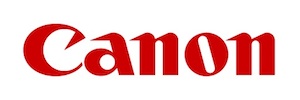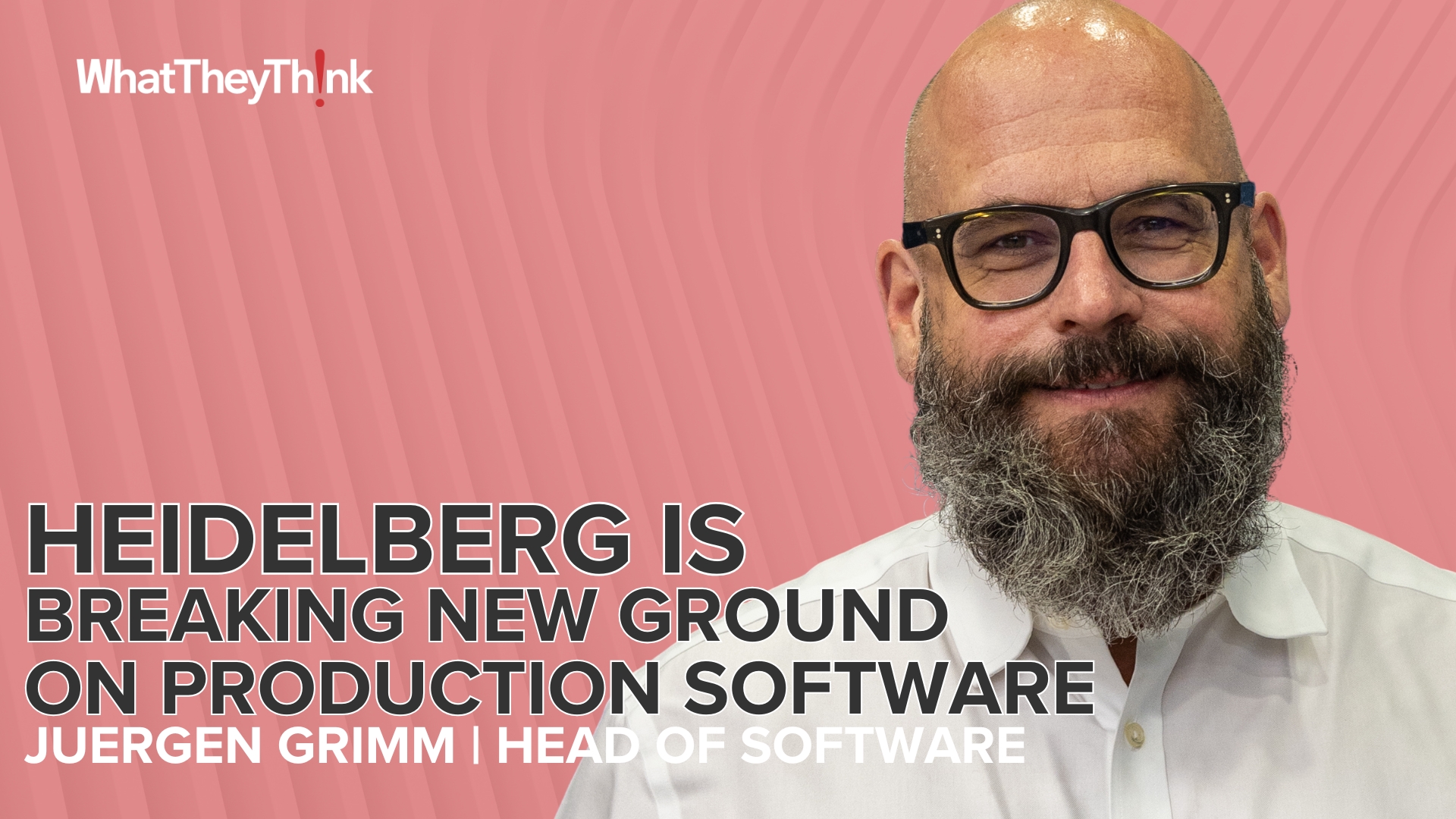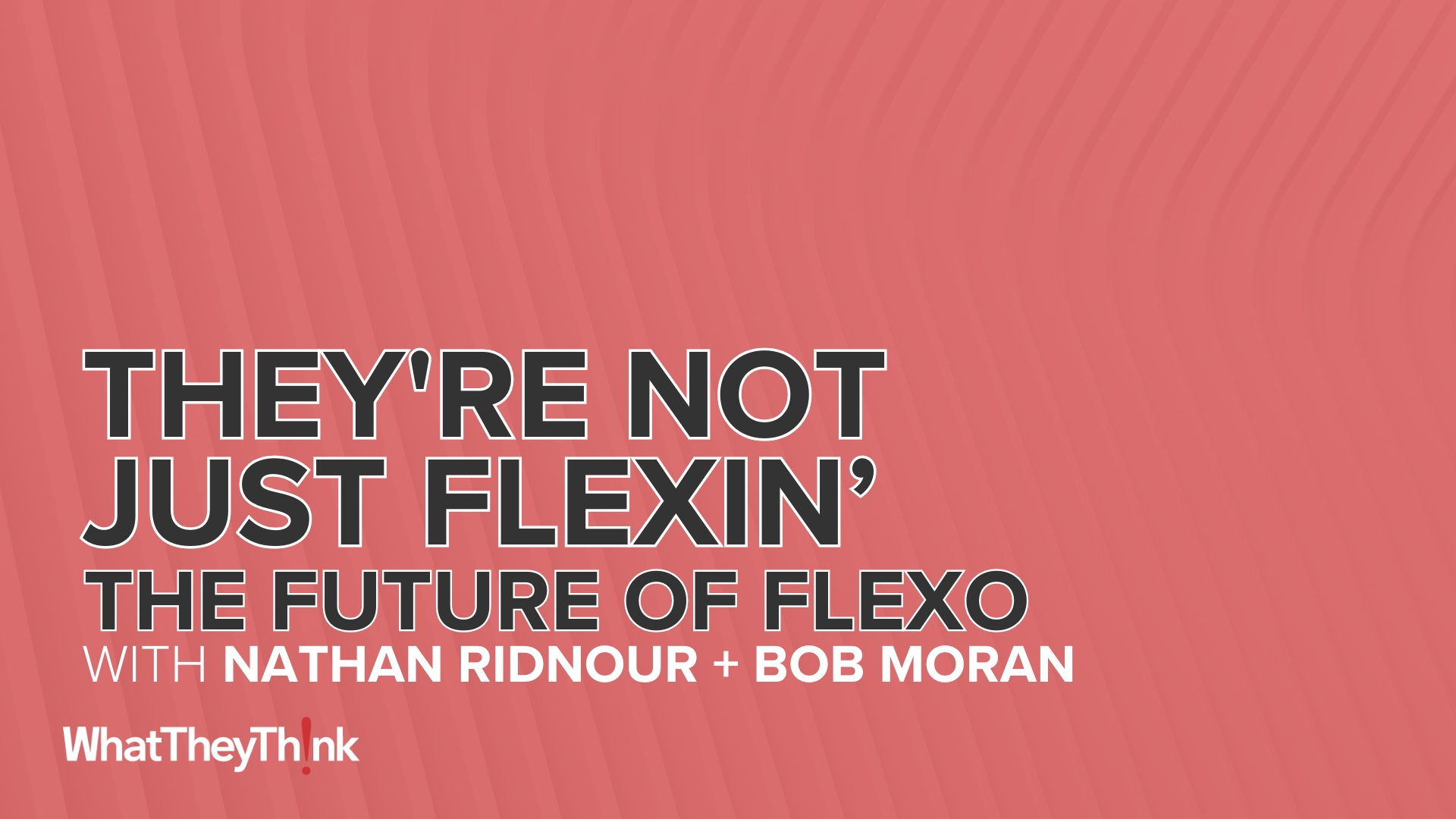Hi. This is Frank Romano for WhatTheyThink.com. In a past episode I was somewhat critical of Canon and their Dream Labo device because of the lack of samples. Well, they sent me samples, and I think it’s only fair to comment on them. And the comment is they’re gorgeous; they are absolutely fantastic. The Dream Labo is an inkjet device for the photofinishing marketplace.
It’s one of the few large inkjet machines for that market, although I think there’ll be others coming on in the marketplace. And it has the unique ability to do both prints as well as large sheets, so you can do photo books or you can do photo prints. So if you’re a photofinisher, this device gives you that level of flexibility.
Now the material that it runs, and their book has samples of the various papers, but the best way to look at it is here are four samples on four different kinds of paper, and you can see the difference in texture and gloss. And by the way, there’s absolutely no doubt that this is photographic quality. As I’ve always said, digital printing quality today exceeds that of offset lithography because it no longer uses half-tones. It is using something very close—the continuous tone, depending on the algorithm and the approach that the company uses. So you’ve got satin paper, you’ve got luster paper, you’ve got glossy paper. All of these allow you to simulate what we used to do with photography and silver halide.
So absolutely no doubt that the Dream Labo is a great device for the photofinishing market. However, in terms of photo books, Canon also has the toner-based 7000 and variations of it, which are phenomenal devices for photo books because you can integrate the finishing line. I’m not quite certain about integrating finishing into this device, although it’s probably going to happen. But if you see, there are trays at the back end over here indicating that the collated book would come out and then you would take it somewhere for binding. So Canon now has alternatives on both sides. On the inkjet side for the photofinishing market and other markets that want to get into photo books and photography materials, as well as their toner-based machines which, by the way, are phenomenal in quality and are more integrated in terms of production. So it gives you an opportunity.
Now there are two different divisions. They’ve got to figure out how to kind of bring this together in some way because these markets are starting to overlap. The market for photo books, by the way, severely overlaps the photofinishing marketplace. And of course, the photofinishing marketplace is having its issues as fewer and fewer people do prints, although there are people who do them which is why the Dream Labo is out there.
So now that I’ve seen the samples I can tell you that they are absolutely gorgeous and I have absolutely no doubt that we’re going to see more and more companies enter this marketplace because this is where the action is. We’re going into a visual era in the way we preserve our memories. You’re not going to do it on a disk, you’re not going to do it on a screen; you’re going to do it on some form of paper and that’s going to be the market for inkjet and for toner. And that’s my opinion.

 Official camera partner of WhatTheyThink and the drupa daily.
Official camera partner of WhatTheyThink and the drupa daily. 












